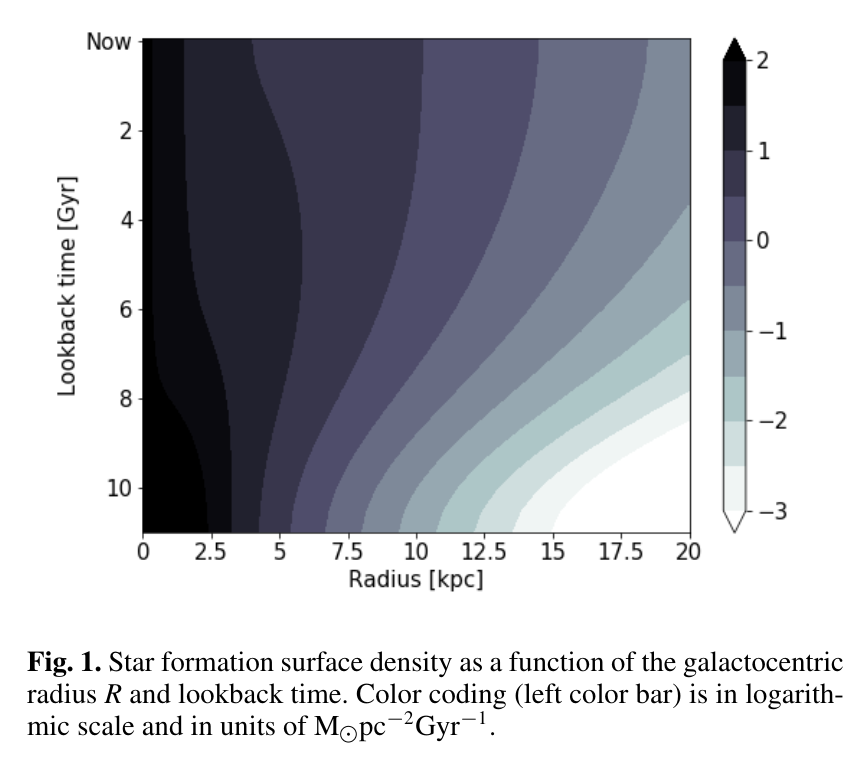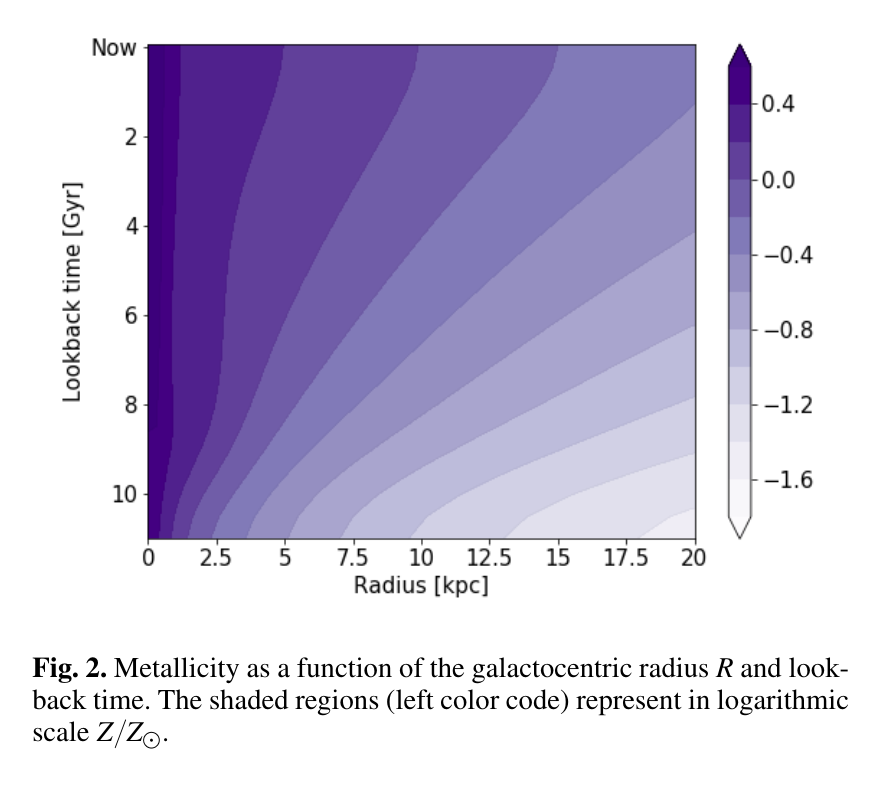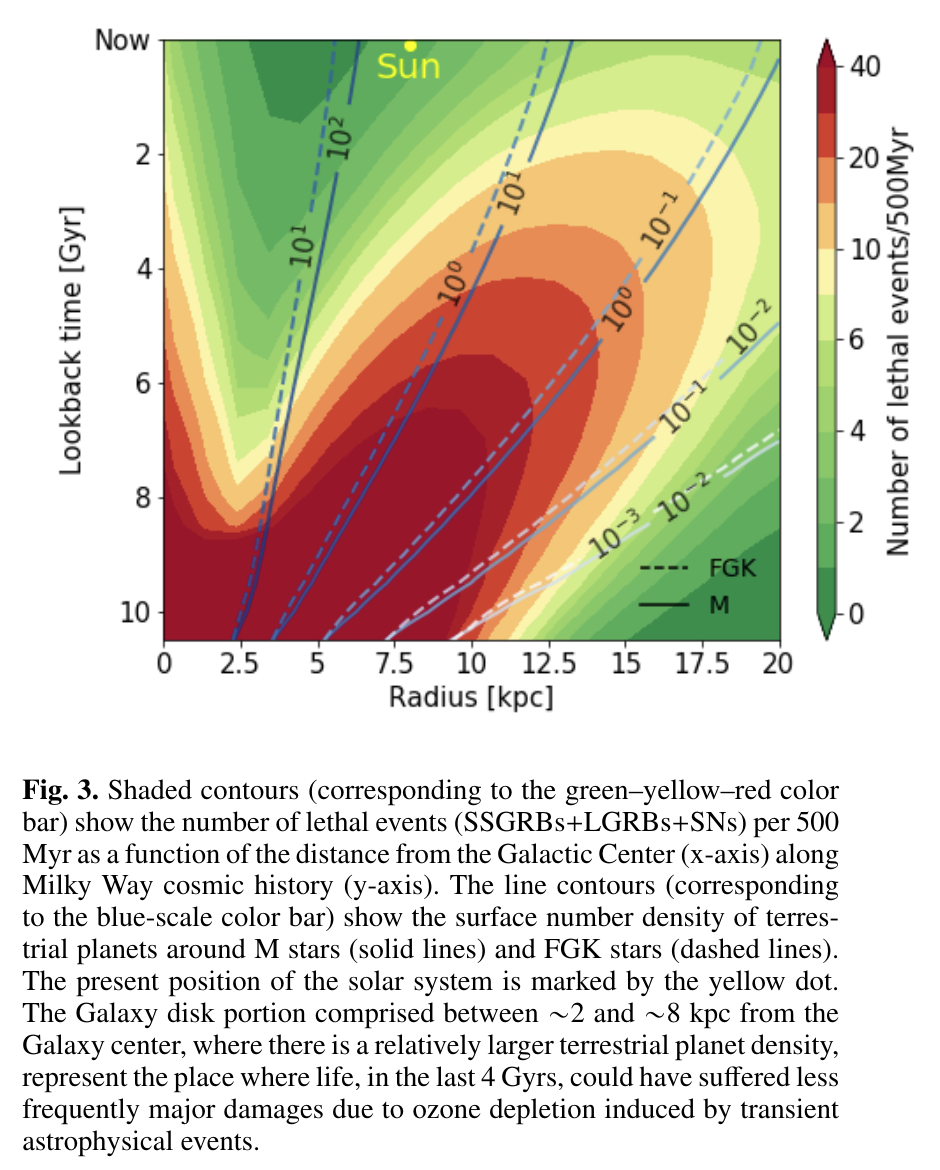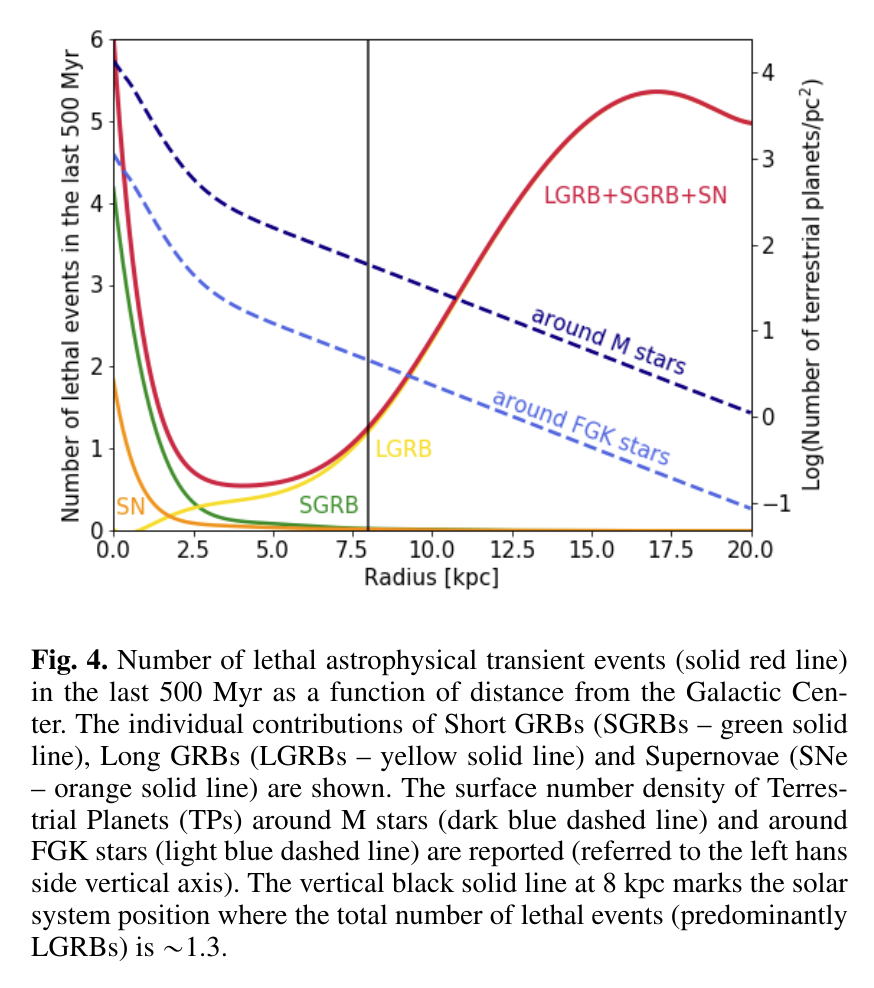The best place and time to live in the Milky Way
- 1Università dell'Insubria, Dipartimento di Scienza e Alta Tecnologia, Italy
- 2INAF, Osservatorio Astronomico di Brera, Merate, Italy
- 3INFN, Sezione Milano-Bicocca, Milano, Italy
- 4Università Milano-Bicocca, Dipartimento di Fisica G. Occhialini, Milano, Italy
Several factors contribute to the emergence and development of life on planets. In addition to local factors (e.g. intrinsic planetary properties and host-star characteristics), planetary habitability can be influenced by the larger scale radiation environment of the Galaxy. Powerful astrophysical transient sources of high energy radiation, like Gamma Ray Bursts (GRBs) and Supernovae (SNe), can be life-threatening and potential cause of mass extinctions. A typical GRB at one kiloparsec distance from a planet with an Earth like atmosphere would destroy most of the ozone layer, expose the biota to harmful UVB radiation from the parent star, and trigger global cooling (due to the increase of the NO2 atmospheric concentration). Indeed, the late Ordovician mass extinction event (~440 million years ago) may have been caused by a GRB.
GRBs are approximately 106 times more energetic than SNe but their rate is ~10,000 times lower. Both classes of transients share a stellar origin, either from the core collapse of very massive stars or from binaries of compact objects. The rate of both classes is higher in environments characterized by intense star formation. However, long GRBs prefer relatively low metallicity star forming sites. Moderately metal polluted regions seem to be the preferred sites for the formation of Earth-like planets potentially suited to harbour lifeforms. Therefore, the threats posed by GRBs and SNe to the emergence and development of life in the Milky Way depend in a not obvious way on the past 12 billion years of evolution of the star formation rate (Fig. 1), and relative metal pollution of the interstellar medium (Fig. 2). On these grounds, we identify where and when, in the Galaxy, life had the best chances of success against lethal cosmic explosions.


We model the lethal effect of GRBs and SNe by scaling their cosmic rates to the MW. GRBs and all SNe rates are proportional to the gas to stars conversion rate within galaxies. In the Galaxy the conversion of gas into stars increased over the past 12 billion years from the center towards the outskirts. Metallicity of newly born stars followed a similar inside-out evolution (Fig. 1 and 2). At different epochs, the number of lethal events as a function of the distance from the center of the Galaxy (Fig. 3) is computed by scaling the cosmic rate to the MW evolving properties (i.e. star formation and metallicity).

In the early stages of the MW evolution (from its formation up to 6 billion years ago) the largest portion of the Galaxy out to 10 kpc from the center was unsuitable to life growth due to the high frequency of lethal events (i.e. > 30 every 500 million years). Although the MW outskirts appear as a safer place to live (green contours in Fig.3), the low density (<0.1 pc2 ) of terrestrial planets around stars of spectral type FGK and M (dashed and solid blue contours in Fig.1) makes life emergence comparatively unlikely.
Starting around 6 Gyrs ago, owing to their energetics, long GRBs became the dominant lethal sources for life within the MW, with an increasing number of lethal events towards the Galaxy periphery (red-to-orange contours in Fig. 3). This is due to the increased conversion rate of relatively low metal polluted gas into massive stars in the outer regions of the MW. Such a global trend determined the formation of an increasingly larger, safer region of the MW centered around 3 kpc (green contours in Fig. 3) where biological complexes could possibly develop on the large population of terrestrial planets present there.
The role of GRBs and SNe in the evolution of life within the last 500 Myrs in our Galaxy is shown in Fig. 4. Up to 2.5 kpc from the center the inhabitability of the MW is due to the high rate of short GRBs and SNe. Long GRBs make the outskirts of the Galaxy similarly unsafe, leaving a region between 2.5 and 8 kpc as the best place where biological systems had time to develop. We estimate ~1 long GRBs occurred in the last 0.5 Gyrs within a few kpc from the Sun, an event possibly associated with the late Ordovidcian mass extinction. Search for exoplanets harbouring lifeforms should have more chances of success looking in the direction of the Galactic center, within 5.5 kpc from the Sun, due to the combined effect of high density of terrestrial planets and of low occurrence of lethal transients.

How to cite: Spinelli, R., Ghirlanda, G., Haardt, F., Ghisellini, G., and Scuderi, G.: The best place and time to live in the Milky Way , European Planetary Science Congress 2021, online, 13–24 Sep 2021, EPSC2021-406, https://doi.org/10.5194/epsc2021-406, 2021.

